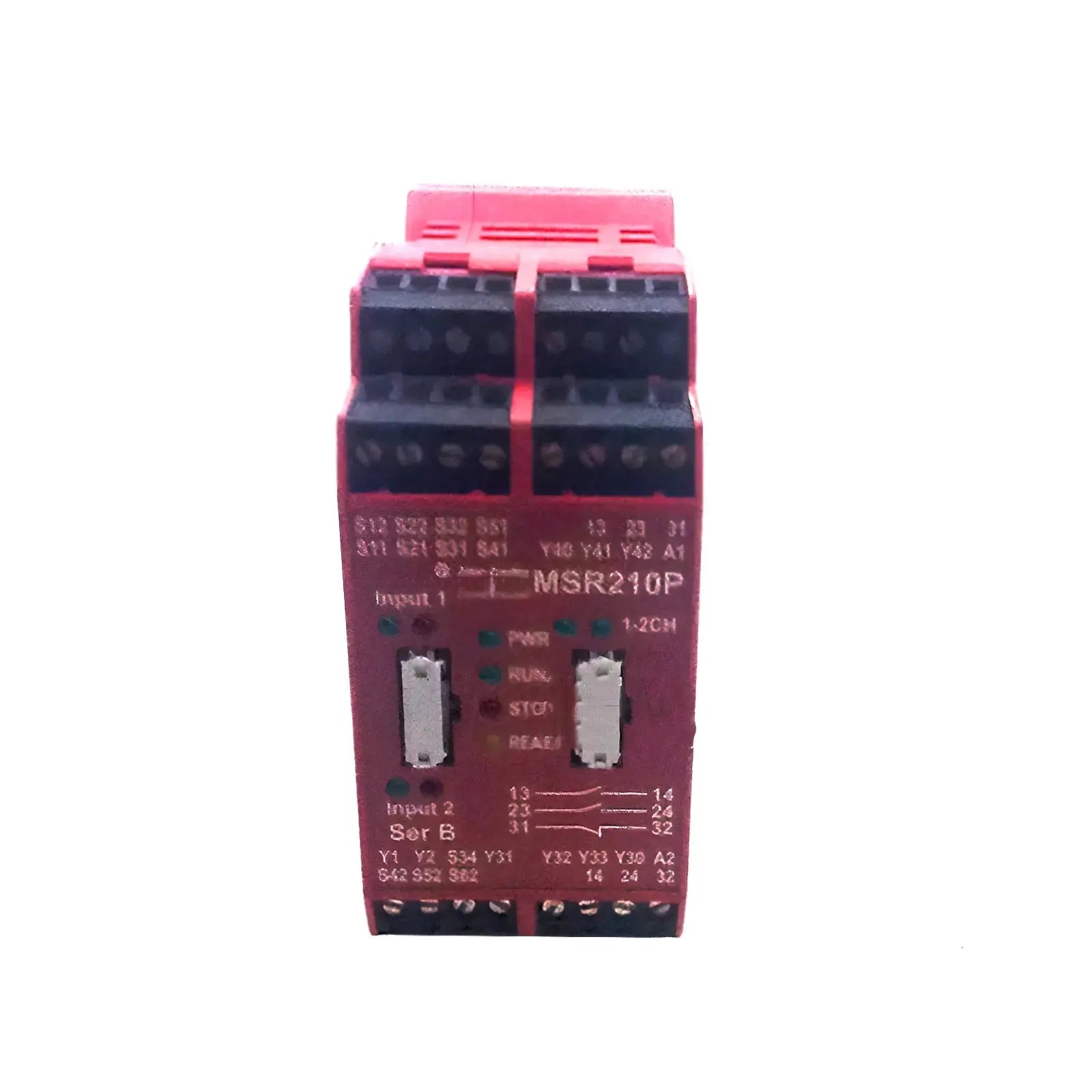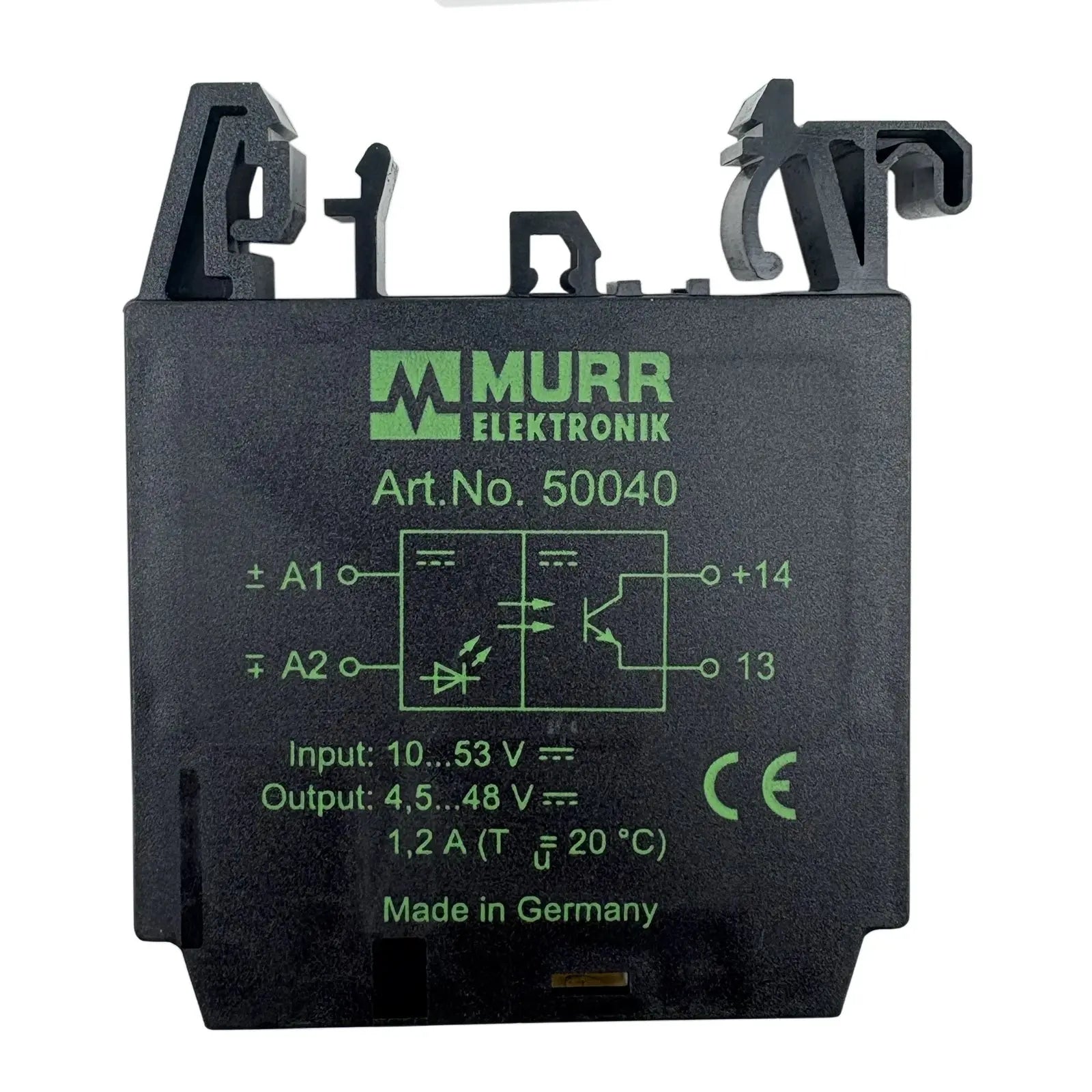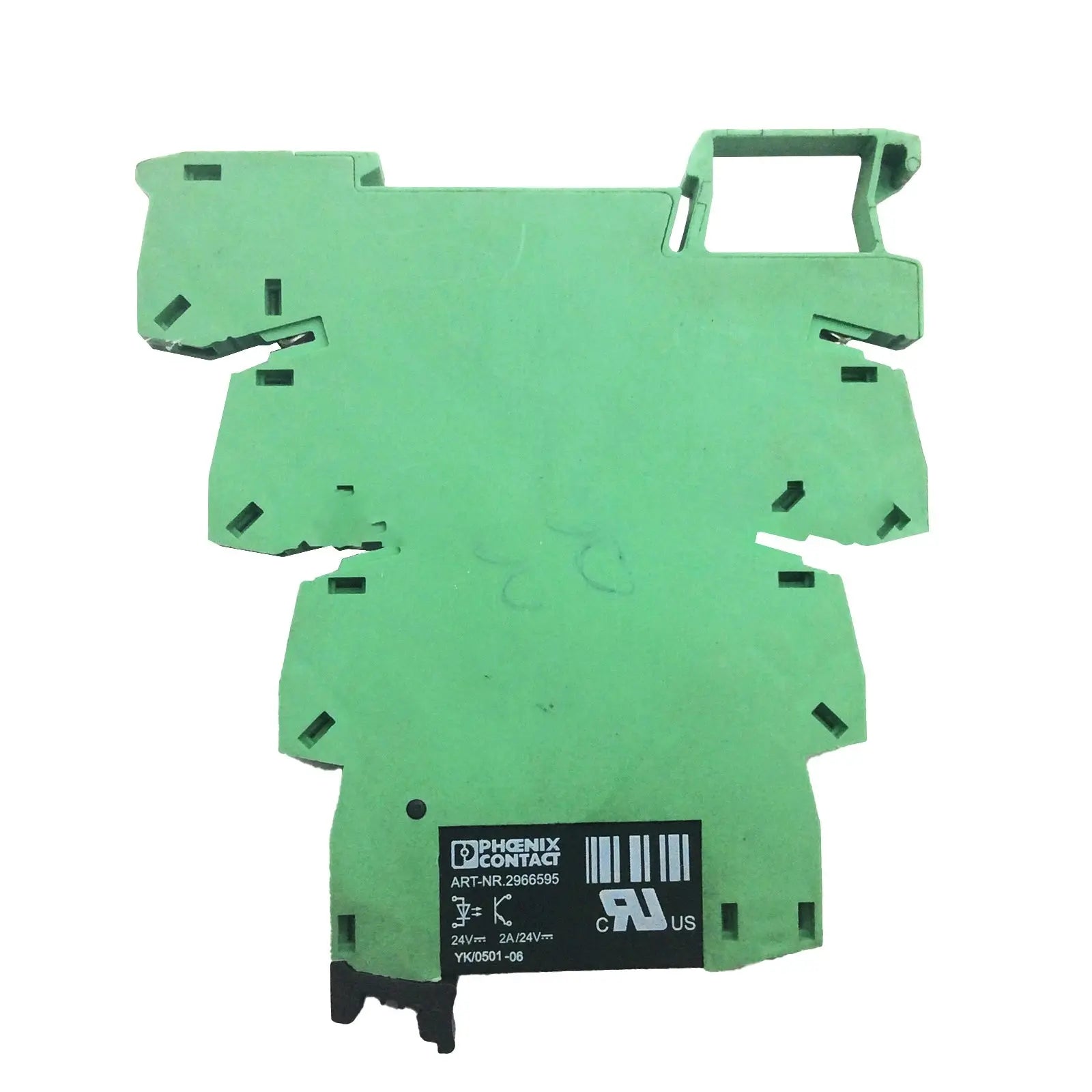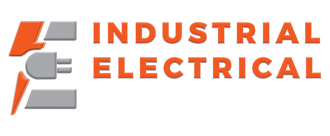Relais de contrôle et relais de sécurité : assurer la sécurité et le bon fonctionnement des opérations
Dans le monde des opérations industrielles, les relais de contrôle et de sécurité jouent un rôle essentiel pour assurer le bon fonctionnement et la sécurité de divers processus. Ces relais sont des composants essentiels pour le contrôle des circuits électriques et la protection des opérations contre les dangers potentiels. Comprendre leurs principes de base, leur fonctionnement, leurs critères de sélection et leurs pratiques de maintenance est essentiel pour maintenir un niveau élevé de sécurité et d'efficacité opérationnelle.
Comprendre les bases des relais de contrôle
Les relais de contrôle sont des dispositifs électriques fonctionnant comme des interrupteurs, contrôlant le flux de courant dans les circuits électriques. Ils servent d'intermédiaires entre le système de contrôle et l'équipement commandé. Leur fonction principale est de gérer le fonctionnement de divers composants, tels que les moteurs, les vannes et les solénoïdes, en fonction de signaux ou de conditions prédéfinis.
La fonctionnalité des relais de contrôle
Un relais de commande est constitué d'une bobine électromagnétique et d'un ensemble de contacts mécaniques. Lorsque la bobine est alimentée, elle crée un champ magnétique qui rapproche les contacts, permettant au courant de circuler dans le circuit commandé. Inversement, lorsque la bobine est désalimentée, les contacts se déconnectent, coupant le circuit et interrompant le courant. Cette fonctionnalité permet aux relais de commande d'activer et de désactiver des charges électriques.
Composants clés des relais de contrôle
Pour garantir un fonctionnement fiable, les relais de contrôle intègrent plusieurs composants clés. Parmi ceux-ci figurent des contacteurs, qui gèrent des charges de courant élevées, et des contacts auxiliaires qui fournissent des signaux de retour et de commande au système de contrôle. De plus, les relais de contrôle intègrent souvent des fonctionnalités telles qu'une protection contre les surcharges, une protection contre les surtensions et des fonctions de diagnostic.
Un aspect important des relais de contrôle est leur polyvalence. Ils peuvent être utilisés dans un large éventail d'applications dans divers secteurs. Par exemple, dans l'industrie manufacturière, les relais de contrôle sont couramment utilisés pour contrôler le fonctionnement des bandes transporteuses, des bras robotisés et des équipements de chaînes de montage. Dans l'industrie automobile, les relais de contrôle sont essentiels à la gestion des systèmes électriques des véhicules, notamment les phares, les essuie-glaces et les vitres électriques.
De plus, les relais de contrôle jouent un rôle crucial pour garantir la sécurité des systèmes électriques. Ils sont souvent utilisés dans les systèmes d'arrêt d'urgence, où ils permettent de couper rapidement l'alimentation afin d'éviter les accidents ou les dommages matériels. Ils sont également utilisés dans les centres de commande de moteurs, où ils assurent la protection contre les surcharges et les courts-circuits.
Une autre caractéristique intéressante des relais de contrôle est leur intégration dans des systèmes de contrôle complexes. Ils peuvent être connectés à des automates programmables industriels (API) ou à d'autres dispositifs de contrôle pour créer des systèmes d'automatisation sophistiqués. Cette intégration permet un contrôle et une surveillance précis des circuits électriques, améliorant ainsi l'efficacité et la productivité.
Plongée dans les relais de contrôle de sécurité
Les relais de contrôle de sécurité remplissent une fonction spécifique en milieu industriel. Leur rôle principal est de surveiller et de contrôler les équipements et processus liés à la sécurité, garantissant ainsi le bien-être du personnel et la prévention des accidents. Ils utilisent diverses fonctions de sécurité, telles que l'arrêt d'urgence, les barrières immatérielles et les tapis de sécurité, pour créer un environnement de travail sûr.
Le rôle des relais de contrôle de sécurité dans les opérations
Les relais de contrôle de sécurité sont conçus pour détecter les conditions anormales ou les situations dangereuses et déclencher les mesures de sécurité appropriées. Ils agissent comme des dispositifs de sécurité, réagissant aux signaux des capteurs et des interrupteurs et prenant des mesures pour atténuer les risques. En cas d'urgence, les relais de contrôle de sécurité peuvent rapidement arrêter les opérations ou activer les dispositifs de sécurité afin de prévenir les accidents et de protéger le personnel.
Caractéristiques des relais de contrôle de sécurité
Les relais de contrôle de sécurité intègrent des fonctionnalités qui améliorent leurs fonctions de sécurité. Celles-ci peuvent inclure la redondance pour garantir la fiabilité, des capacités d'auto-vérification pour détecter les défauts et des fonctions de surveillance pour fournir un retour d'information sur l'état du système de sécurité. De plus, les relais de contrôle de sécurité sont souvent conformes à des normes et certifications de sécurité strictes, garantissant ainsi leur adéquation aux applications critiques.
Un aspect important des relais de contrôle de sécurité est leur capacité à gérer des scénarios de sécurité complexes. Dans les environnements industriels, de nombreux dispositifs et systèmes de sécurité doivent fonctionner ensemble de manière transparente pour garantir un niveau de sécurité optimal. Les relais de contrôle de sécurité sont conçus pour s'intégrer à ces différents composants, offrant ainsi une solution de sécurité complète. Ils peuvent communiquer avec divers capteurs, interrupteurs et autres dispositifs de sécurité, coordonnant leurs actions pour créer un réseau de sécurité cohérent.
De plus, les relais de contrôle de sécurité sont dotés de capacités de diagnostic avancées. Ils surveillent en permanence les performances des dispositifs et systèmes de sécurité et détectent toute défaillance ou dysfonctionnement potentiel. En fournissant un retour d'information en temps réel sur l'état du système de sécurité, les relais de contrôle de sécurité permettent une maintenance et un dépannage proactifs, minimisant ainsi les temps d'arrêt et maximisant la sécurité.
L'importance des relais de contrôle et de sécurité dans les opérations industrielles
Les relais de contrôle et de sécurité jouent un rôle crucial dans le maintien de la sécurité et de l'efficacité opérationnelles en milieu industriel. Leur présence et leur bon fonctionnement présentent plusieurs avantages clés.
Assurer la sécurité opérationnelle
Les relais de contrôle et de sécurité permettent la mise en œuvre de mesures et de protocoles de sécurité, protégeant ainsi le personnel et les équipements des dangers potentiels. En surveillant et en contrôlant les processus critiques, ces relais contribuent à prévenir les accidents, à réduire les risques de blessures et à garantir le respect des réglementations de sécurité.
Améliorer l'efficacité des processus
Les relais de contrôle permettent un contrôle et une automatisation précis des équipements et des processus. En gérant avec précision le fonctionnement des différents composants et en fournissant un retour d'information instantané, ils optimisent l'efficacité des processus industriels. Il en résulte une productivité accrue, une consommation d'énergie réduite et une meilleure utilisation des ressources.
De plus, les relais de contrôle sont conçus pour une large gamme d'applications industrielles. Ils peuvent être utilisés dans les usines de fabrication, les centrales électriques et même les systèmes de transport. Dans les usines, les relais de contrôle servent à réguler le fonctionnement des machines et à garantir le bon déroulement des processus de production. Ils peuvent surveiller des variables telles que la température, la pression et le débit, et effectuer des ajustements en temps réel pour maintenir des conditions optimales.
Dans les installations de production d'électricité, les relais de contrôle sont essentiels au fonctionnement sûr et efficace des générateurs et des transformateurs. Ils surveillent les niveaux de tension, le flux de courant et d'autres paramètres électriques afin d'éviter les surcharges et les courts-circuits. En détectant rapidement toute anomalie, les relais de contrôle peuvent déclencher des mesures de protection, telles que l'arrêt de l'équipement, afin d'éviter tout dommage et d'assurer la sécurité du personnel.
Les relais de contrôle jouent également un rôle essentiel dans les systèmes de transport, tels que les chemins de fer et les aéroports. Ils sont responsables du contrôle des signaux, des aiguillages et des circuits de voie pour assurer la sécurité des trains et des avions. En coordonnant la circulation et en prévenant les collisions, les relais de contrôle contribuent à l'efficacité et à la fiabilité globales de ces réseaux de transport.
De plus, les relais de sécurité offrent une protection supplémentaire aux opérations industrielles. Ils sont spécialement conçus pour détecter les situations potentiellement dangereuses et activer des mesures de sécurité afin de prévenir les accidents. Par exemple, ils peuvent surveiller les boutons d'arrêt d'urgence, les barrières de sécurité et les barrières immatérielles. Si l'un de ces dispositifs de sécurité se déclenche, les relais peuvent immédiatement arrêter la machine ou isoler les zones dangereuses, protégeant ainsi les travailleurs et les équipements.
En conclusion, les relais de contrôle et de sécurité sont des composants essentiels des opérations industrielles. Ils garantissent la sécurité opérationnelle, améliorent l'efficacité des processus et offrent un large éventail d'applications dans divers secteurs. En surveillant et en contrôlant en continu les processus critiques, ces relais contribuent au bon fonctionnement et à la sécurité des environnements industriels.
Sélection des relais de contrôle et de sécurité appropriés
Choisir les relais de contrôle et de sécurité adaptés à chaque application est essentiel pour garantir des performances et une sécurité optimales. Plusieurs facteurs doivent être pris en compte lors du processus de sélection.
Lors du choix de relais de contrôle et de sécurité, il est important d'examiner les détails. Un facteur crucial à prendre en compte est le courant et la tension requis. Ces valeurs déterminent la capacité du relais à supporter la charge électrique et garantissent son fonctionnement dans les limites de sécurité. De plus, les conditions environnementales jouent un rôle important dans le processus de sélection. Les relais exposés à des températures extrêmes, à l'humidité ou aux vibrations doivent être choisis en conséquence pour garantir leur longévité et leur fiabilité.
Le temps de réponse est un autre facteur crucial à prendre en compte. Dans les applications où la rapidité de réaction est cruciale, comme les systèmes d'arrêt d'urgence, des relais à temps de réponse rapide sont essentiels. En revanche, dans certaines situations, un délai d'activation du relais peut être nécessaire pour permettre le déroulement de processus ou de séquences spécifiques. Les relais temporisés sont spécialement conçus pour répondre à ces exigences.
La tolérance aux pannes est un critère essentiel lors du choix des relais de contrôle et de sécurité. Les relais utilisés dans les systèmes critiques, comme ceux des centrales nucléaires ou des applications aérospatiales, doivent présenter une tolérance élevée aux pannes afin de garantir la détection et la résolution rapide de toute défaillance potentielle. Cela permet d'éviter des conséquences catastrophiques et de garantir la sécurité du personnel et des équipements.
La compatibilité avec le système de contrôle existant est un autre facteur à ne pas négliger. Il est essentiel de garantir que les relais sélectionnés s'intègrent parfaitement à l'infrastructure existante. Cette compatibilité garantit un fonctionnement fluide et évite tout conflit ou problème potentiel dû à des composants incompatibles.
En matière de maintenance, la facilité d'accès et la simplicité sont essentielles. Choisir des relais faciles à entretenir et à dépanner permet de gagner un temps précieux et de réduire les ressources. De plus, la disponibilité des pièces de rechange est essentielle pour minimiser les temps d'arrêt en cas de panne ou de dysfonctionnement.
Comprendre les différents types de relais de contrôle et de sécurité est également essentiel pour prendre une décision éclairée. Les relais temporisés, comme leur nom l'indique, introduisent un délai avant leur activation ou désactivation. Ce délai peut être ajusté selon les besoins. Les relais à verrouillage, quant à eux, ont la capacité de maintenir leur état même après la suppression du signal de commande. Cette fonctionnalité est utile dans les applications où des coupures de courant ou des signaux de commande intermittents peuvent survenir. Les relais statiques, qui utilisent des semi-conducteurs plutôt que des contacts mécaniques, offrent des avantages tels que des temps de réponse plus rapides, une durée de vie plus longue et un fonctionnement silencieux.
En examinant attentivement ces facteurs et en comprenant les différents types de relais de contrôle et de sécurité disponibles, vous pouvez prendre une décision éclairée qui garantit des performances et une sécurité optimales du système.
Maintenance et dépannage des relais de contrôle et de sécurité
Pour garantir un fonctionnement fiable et sûr, une maintenance régulière et un dépannage proactif des relais de contrôle et de sécurité sont essentiels.
Pratiques d'entretien régulières
Les pratiques de maintenance des relais de contrôle et de sécurité comprennent des inspections périodiques, le nettoyage des contacts, la vérification du bon fonctionnement et le remplacement des composants usés. De plus, la tenue d'un registre complet des activités de maintenance peut aider à identifier les schémas ou les problèmes récurrents.
Problèmes courants et leurs solutions
Malgré un entretien adéquat, les relais de contrôle et de sécurité peuvent parfois rencontrer des problèmes. Parmi les problèmes courants, on peut citer la soudure des contacts, le grillage des bobines et les connexions défectueuses. Le dépannage de ces problèmes implique souvent l'inspection des connexions électriques, le test des composants individuels et le remplacement des pièces défectueuses. Consulter la documentation technique du relais ou faire appel à des professionnels qualifiés peut aider à résoudre efficacement ces problèmes.
En comprenant les principes de base, les fonctionnalités, les critères de sélection et les pratiques de maintenance des relais de contrôle et de sécurité, les opérateurs industriels peuvent garantir la fiabilité, la sécurité et l'efficacité de leurs opérations. Une mise en œuvre bien planifiée de ces relais permet non seulement de protéger le personnel et les équipements, mais aussi d'améliorer la productivité et d'optimiser les processus. Face à l'évolution constante des opérations industrielles, les relais de contrôle et de sécurité restent des outils indispensables pour garantir la sécurité et le bon fonctionnement des opérations.
Besoin de commandes en gros ou de recommandations d'experts sur SCR-B-CR ?
Vous souhaitez commander des SCR-B-CR en gros ou avez besoin d'aide pour choisir la solution industrielle idéale ? Notre équipe est là pour vous aider avec des devis personnalisés, des recommandations de produits et des conseils techniques. Que vous soyez électricien, entrepreneur ou chef d'entreprise, nous proposons des solutions sur mesure pour répondre à vos besoins.
📩 Contactez-nous ou discutez avec nous en direct pour une assistance instantanée !
Découvrez notre collection mensuelle d'offres de folie !
Profitez de réductions exceptionnelles dans notre magasin ! Découvrez les meilleures offres :
Explorez ces catégories maintenant et profitez des meilleures offres avant qu'elles ne disparaissent !
-
Tous les produits de notre gamme – Des produits de qualité supérieure sélectionnés avec soin pour vous.
-
Meilleures ventes – Articles préférés des clients et articles très demandés.
-
Offres spéciales et soldes Watts – Remises à durée limitée sur des produits incontournables.
-
Watts New – Nouveautés et dernières innovations.
-
Toutes les collections – Explorez tout ce que nous avons à offrir.
Explorez ces catégories maintenant et profitez des meilleures offres avant qu'elles ne disparaissent !
N'oubliez pas de consulter nos remises massives jusqu'à épuisement des stocks !















































